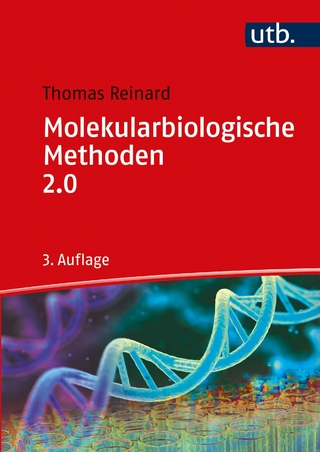
Correlative Light and Electron Microscopy III
Academic Press Inc (Verlag)
978-0-12-809975-9 (ISBN)
Chapters in this ongoing series deal with different approaches for analyzing the same specimen using more than one imaging technique. The strengths and application area of each is presented, with this volume exploring the aspects of sample preparation of diverse biological systems for different CLEM approaches.
Thomas Müller-Reichert is a Professor of Structural Cell Biology at the Technische Universität Dresden (TU Dresden, Germany). He is interested in how the microtubule cytoskeleton is modulated within cells to fulfill functions in mitosis, meiosis and abscission. The Müller-Reichert lab is mainly applying correlative light microscopy and electron tomography to study the 3D organization of microtubules in early embryos and meiocytes of the nematode Caenorhabditis elegans, and also in mammalian cells in culture. He has published over 75 papers and edited several volumes of the Methods in Cell Biology series on electron microscopy and CLEM. TMR obtained his PhD at the Swiss Federal Institute of Technology (ETH) in Zurich and moved afterwards for a post-doc to the EMBL in Heidelberg (Germany). He was a visiting scientist with Dr. Kent McDonald (UC Berkeley, USA). Together with Paul Verkade, he set up the electron microscope facility at the newly founded Max Planck Institute of Molecular Cell Biology and Genetics (MPI-CBG). Since 2010 he is a scientific group leader and head of the Core Facility Cellular Imaging (CFCI) of the Faculty of Medicine Carl Gustav Carus of the TU Dresden. He acted as president of the German Society for Electron Microscopy (Deutsche Gesellschaft für Elektronenmikroskopie, DGE) from 2018 to 2019. He taught numerous courses and workshops on high-pressure freezing and Correlative Light and Electron Microscopy. Paul Verkade is a Professor of Bioimaging at the University of Bristol, UK where his research group works on the development and application of microscopy techniques to Biomedical questions. The main tools in the lab are Electron microscopy (EM) and Correlative Light Electron Microscopy (CLEM) in which fields he has published over 100 papers and edited 5 books on CLEM (including 4 Volumes of the Methods in Cell Biology series). PV obtained his PhD at the University of Utrecht, The Netherlands in 1996. Subsequently he did a post-doc at the EMBL, Heidelberg, Germany, after which he set up the electron microscopy unit at the newly formed Max Planck Institute for Molecular Cell Biology in Dresden, Germany from 2001. He moved to the UK in 2006 to set up another EM unit as part of an integrated LM and EM bioimaging facility, which facilitates CLEM workflows. He is actively involved in shaping the future microscopy landscape with roles in the Royal Microscopical Society and BioimagingUK and a current focus on putting volumeEM on the imaging map through community building and the organisation and co-chairing of the 1st Gordon Research Conference on vEM.
1. Millisecond time-resolved CLEM2. Super resolution LM und SEM of high-pressure frozen C. elegans3. Preservation fluorescence, super res CLEM4. Targeted ultramicrotomy5. CEMOVIS-CLEM6. APEX in Tissue7. Corrsight mit IBIDI flowthrough chamber8. Corrsight9. Correlative Light Atomic Force Electronic Microscopy (CLAFEM)10. Atmospheric EM CLEM11. Correlated Fluo Light SEM12. Near infrared branding + SBF SEM13. 4. Correlative MicroCT14. High-precision correlation15. CLEM acquisition16. ecCLEM mapping software
| Erscheinungsdatum | 02.06.2017 |
|---|---|
| Reihe/Serie | Methods in Cell Biology |
| Mitarbeit |
Herausgeber (Serie): Thomas Muller-Reichert, Paul Verkade |
| Verlagsort | San Diego |
| Sprache | englisch |
| Maße | 191 x 235 mm |
| Gewicht | 970 g |
| Themenwelt | Naturwissenschaften ► Biologie ► Genetik / Molekularbiologie |
| Naturwissenschaften ► Biologie ► Zellbiologie | |
| Naturwissenschaften ► Chemie ► Analytische Chemie | |
| ISBN-10 | 0-12-809975-5 / 0128099755 |
| ISBN-13 | 978-0-12-809975-9 / 9780128099759 |
| Zustand | Neuware |
| Haben Sie eine Frage zum Produkt? |
aus dem Bereich


